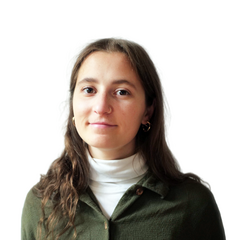World’s first cheese made from artificial milk protein to go on sale in Berlin
Forgetting oily soy milk alternatives, a new Berlin company set out to mimic the world’s favourite cheeses using molecular biology, and their findings are set to hit supermarket shelves this summer.
World premiere of milk protein vegan cheeses planned in Berlin
After five years in the making, a team of 30 molecular biologists and product developers in Berlin are set to launch the world’s first cheeses made from artificial milk proteins.
The Formo start-up was launched by Swiss-born Raffael Wohlgensinger in 2019, who recruited the expertise of former Max Planck Institute molecular biologist Britta Winterberg. After raking in 55 million euros in investments - the most ever by a European food tech company - the company has developed four new animal-free cheeses, each a twist on favourites, all named after areas in Berlin.
Frischain will be the new Frischkäse (cream cheese), Camenbritz the new Camembert, Hellasdorf the new feta and Frankoforte the new Roquefort. The German supermarkets where the cheeses will make their world debut is yet to be decided.
How is the artificial milk protein cheese made?
“The foundational idea is creating protein from a microorganism which has the same DNA as milk protein,” product developer at Formo Jo-Anne Petri told taz.
The process is called precision fermentation. “In principle, you can compare it quite well to producing beer, in which alcohol is obtained from a microorganism, the yeast fungus, by adding sugar. This is also a metabolic process. We take a microorganism, for example, the Koji fungus, and add sugar and other minerals. The result is not alcohol, but proteins.”
After this process, there are much fewer steps involved to get to the end product than there would be with dairy cheese. The proteins are mixed with water, seasoning and different kinds of plant fats, depending on the desired consistency and the kind of cheese being produced.
Trying to perfect their technique, team members are still comparing their cheese creations to dairy cheeses. “When one of us goes on holiday they bring back cheese and we try them, Petri told taz. After a holiday in Sardinia, an employee is said to have brought back a cheese which tasted “exactly like the one produced [in Berlin].”
The casein point: Why is finding a convincing cheese alternative such a big deal?
While not as cheesy, existing plant-based cheeses made from soya or coconut milk are on the rise, and milk consumption has been in consistent decline in Germany for several years. According to figures recently published by BMEL, Germany consumed 46 kilograms of cow's milk per capita in 2023, revealing a significant drop from the 60 kilos consumed per capita in the mid-1990s.
For many, animal welfare and the environmental impact of the animal agriculture industry are a concern. According to Formo, its dairy-free cheese produces up to 97 percent less CO2 compared to cheeses using animal products, uses 90 percent less water and of course, much less land.
But the German dairy industry remains the EU’s biggest and according to figures from the Nuremberg Society for Consumer Research (GfK), close to 93 percent of households still buy cow’s milk or UHT milk, just less than they used to.
But Formo’s next goal, to conquer casein, could spell another shift for the industry. Cows’ milk contains 80 percent casein protein, which makes cheese so cheesy. So far, Formo and only two other companies - one in the US and one in Israel - are using microbiology to try and create artificial casein that can be used to make the most convincing dairy cheese alternative yet.
Thumb image credit: sweet marshmallow / Shutterstock.com
By clicking subscribe, you agree that we may process your information in accordance with our privacy policy. For more information, please visit this page.



COMMENTS
Leave a comment